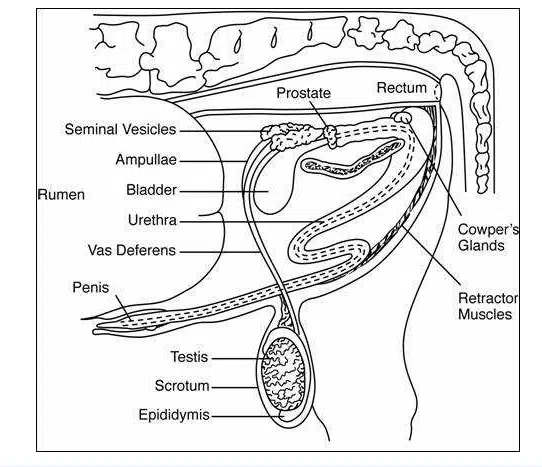Bull Fertility
A Bull’s Worth: An Extensive Analysis on Improving Bull Fertility for Successful Herds
A simple aphorism that bears great validity in the field of cattle raising is “A bull is half the herd.” The reproductive success, calving rates, and ultimately the profitability of your farm are strongly impacted by a bull’s fertility. However, what precisely qualifies a bull as fertile, and how can you be sure yours is thriving?
This thorough handbook explores the intriguing topic of bull fertility. We’ll go over the essential elements that go into a bull’s capacity to sire healthy calves, as well as methods to maximise breeding success and herd potential.
Table of Contents

Looking Past the Outer Forms: Revealing the Foundations of Bull Fertility
Although a bull’s massive frame and commanding presence may be visually appealing, excellent fertility is not always guaranteed. A bull’s capacity to father healthy offspring is determined by a number of interrelated but important factors:
- Structural Soundness: An important factor is a bull’s physical conformation. Proper sperm generation and delivery depend on healthy reproductive organs and well-developed testicles.
- Semen Quality: This is the area of true magic. Fertilisation success is greatly influenced by variables such as sperm motility (movement), morphology (shape), and concentration. Sufficient motility guarantees that sperm can enter the egg, while appropriate morphology facilitates attachment and penetration. The chance of fertilisation rises with sufficient sperm concentration.
- Libido: The willingness and capacity of a bull to mate is essential to the effectiveness of breeding. Reduced calving rates and lost breeding opportunities can result from low libido.
- Age and Health: Bulls may naturally become less fertile as they get older. Bulls that suffer from underlying health problems may also find it more difficult to reproduce. Proactive illness prevention and routine health examinations are crucial.
Being Aware of Your Numbers Assessing Bull Fertility for Maximum Output
Maintaining ideal bull fertility requires constant observation and assessment, much like any other successful operation. Frequent evaluations provide you a clear view of your bull’s reproductive health and capacity to support the herd:
- When evaluating bull fertility: Breeding Soundness Evaluation (BSE) is the gold standard. This extensive assessment, usually carried out by a certified veterinarian, includes a full physical examination, sperm quality assessment using semen analysis, and libido appraisal of the bull.
- Performance Logs: Never undervalue the significance of historical facts. Monitoring your bull’s past breeding results, the calving rates of the progeny he sired, and any possible problems with reproduction can provide important information about your bull’s long-term fertility and productivity.
Managing to Mating: Techniques for Maximising Bull Fertility
Investing in your bull’s fertility involves more than simply evaluations; it also entails putting measures in place that promote a robust and healthy breeding animal. Here are some crucial management techniques to think about:
- Nutrition: For optimum sperm production and general health, bulls require a balanced diet full of vital nutrients, just like people do. Get advice from an animal nutritionist or veterinarian to develop a feeding schedule that is specific to the age, breed, and activity level of your bull.
- Body Condition: Keep your bull’s Body Condition Score (BCS) at a healthy level. Underweight or overweight conditions might have an adverse effect on fertility. Your bull will stay within the ideal BCS range if the diet and exercise routine are regularly monitored and adjusted.
- Accommodation and Administration: Give your bull enough room in a clean, well-kept enclosure. Stress from overcrowding might result in health issues and a decline in libido. Maintaining good hygiene and conducting routine cleanings in the housing area are also essential.
- Disease Prevention: In order to preserve general bull health and avoid illnesses that could impair reproduction, vaccinations and parasite control programmes are essential.
- Handling Mating: Avoid overworking your bull! To prevent overbreeding and provide enough recuperation time, keep a fair breeding ratio and think about rotating bulls within the herd.
Fertility Investing: Long-Term Benefits for Your Herd
Setting bull fertility as a top priority is like making a calculated investment in the future of your herd. A more prolific bull raises the calving rate, which in turn produces healthier calves and more profit. You can make sure your herd survives for many generations by putting regular assessments into practice, taking a proactive approach to bull health and management, and encouraging a dedication to ideal breeding methods. Recall that although a bull may constitute “half the herd,” his input into an efficient and long-lasting cattle enterprise is genuinely priceless.



Nice